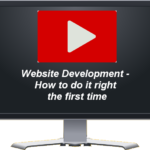If you’ve ever laughed at a good pun, you’ve experienced the magic of context. The phrase “It will bring the kid in you out” is charming when spoken by a ride operator at an amusement park—but wildly different when said by an obstetrician! That contrast is more than just a punchline; it’s a powerful example of how context shapes meaning.
Life is filled with ambiguity. Words, ideas, and objects rarely have fixed meanings. Instead, we rely on context—our environment, assumptions, and shared understandings—to decode meaning. But here’s the twist: some of the greatest innovations have occurred when people deliberately took things out of context.
Let’s think about it. The first person who looked at a clam and thought, “Hmm, I wonder if this is edible?” was removing the object from its assumed context—perhaps a slimy, muddy nuisance—and reimagining it as food. That decision was not only bold but highly creative.
Or take the person who saw sheep intestines and thought, “These could make a great guitar string.” That’s not just ingenuity—that’s the essence of innovation. In fact, many pivotal inventions emerged from someone seeing an object not for what it is, but what it could be. Consider the perfume atomizer that inspired the invention of the gasoline carburetor. One moment, it’s spritzing a fragrance; the next, it’s powering an engine. Now that’s lateral thinking.
This kind of out-of-context thinking is not reserved for inventors or scientists. We do it all the time in our daily lives. Ever used a lighter to open a beer bottle? Or shoved a big dictionary or phonebook under a toddler to turn a kitchen chair into a makeshift booster seat? Congratulations—you’re already practicing contextual creativity!
In business, this mindset can be a game-changer. Seeing your product, service, or skill set in a completely different light can uncover new markets or uses you hadn’t considered. Think of how bubble wrap was originally created as wallpaper. That didn’t work out—but recontextualizing it as packing material? Huge success.
As entrepreneurs, creators, and problem-solvers, we should ask ourselves: What else could this be? That question is often the gateway to unexpected opportunity.
One exercise I encourage with my clients is to take their current business model or product and ask, “In what other industries could this apply?” Or “How would a five-year-old use this?” The goal isn’t always to find a profitable pivot. Sometimes, it’s just to shake up the brain enough to see familiar tools in new ways.
Creativity often begins where logic ends—when we take something out of its normal context and ask, “What else could this be?”
Take Lars Roulund, the founder of HESS LLC and the visionary behind AirHawk Comfort Seating Systems I spoke about in “Four Business Lessons From The Sturgis Motorcyle Rally.” While visiting trade shows, he came across an innovation by ROHO Inc.—interconnected air bladder cushions designed to reduce pressure sores in bedridden and wheelchair-bound patients. Now, that technology had a clear, defined purpose in the healthcare industry. But, Lars didn’t stop there. He saw an opportunity beyond hospitals and clinics.
He imagined a different customer segment entirely—motorcyclists and truck drivers, who also spend hours seated and often struggle with discomfort on long rides. Lars acquired the rights to the technology from ROHO Inc. and reimagined it. The result was AirHawk, a seating solution that revolutionized comfort in transportation. In doing so, he didn’t just find a niche—he created a blue ocean, a market space free from competition.
The Business Model Canvas is a great tool to support this type of thinking. By mapping out elements like customer segments, value propositions, and key activities, it becomes easier to play with possibilities and reframe a business idea through different lenses.
Whether you’re an artist, entrepreneur, teacher, or technician, remember: creativity isn’t always about making something new—it’s often about seeing something familiar in an entirely new context.
So, next time you feel stuck, try taking your idea, product, or even a problem you’re facing—and drop it into a completely different scenario. What changes? What becomes possible?
In what different contexts can you imagine your ideas?












